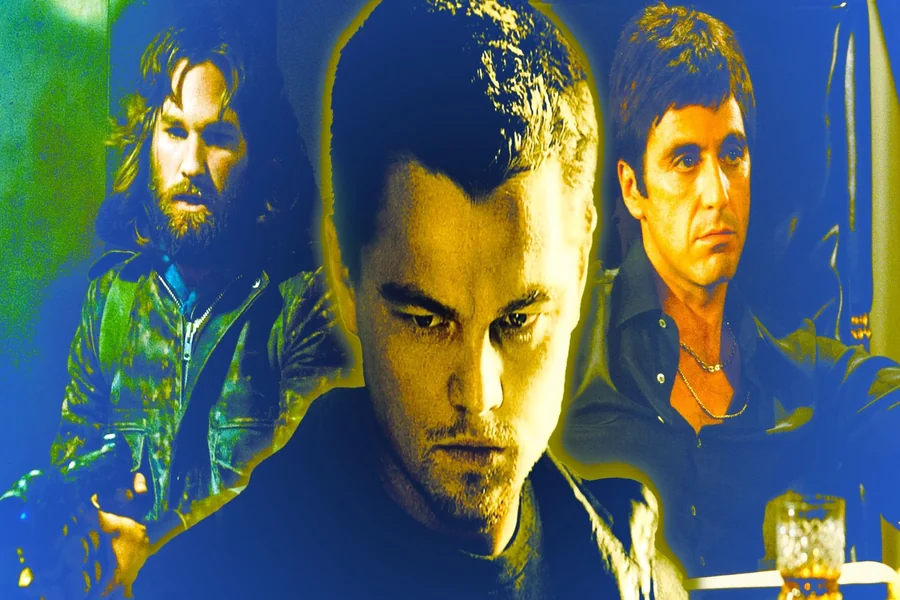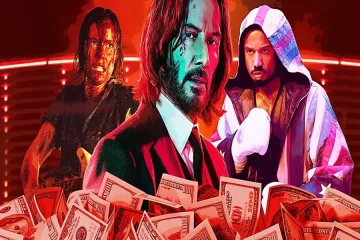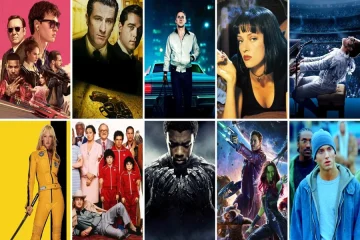In the world of filmmaking, sequels have long been a topic of debate. While some argue that sequels can never surpass the original film, others believe that movie sequels can often be better than the originals. This argument is especially true for films that establish rich worlds, complex characters, and compelling storylines that can be expanded upon in sequels. While a few sequels may fail to live up to expectations, many have surpassed the original film in terms of depth, innovation, and emotional impact. In this article, we’ll explore why movie sequels are often considered better than the originals and what factors contribute to this phenomenon.
1. The Opportunity to Build on a Strong Foundation
The most obvious reason sequels can surpass their predecessors is the foundation laid by the original film. The original movie often introduces key characters, sets up the world, and establishes the core plot. When a sequel is made, the groundwork has already been done, giving filmmakers the opportunity to expand on the world, deepen character arcs, and introduce more complex storylines. This allows sequels to build on the success of the original and often offer a more enriched experience.
For example, The Dark Knight (2008), the sequel to Batman Begins (2005), benefited greatly from the character development and world-building done in the first film. Christopher Nolan’s follow-up was able to delve into darker, more complex themes while still staying true to the foundation laid in the original. As a result, it’s often regarded as superior to the first film due to its deeper emotional resonance and higher stakes.
2. Character Development and Evolution
One of the most compelling reasons sequels can improve upon the original film is the opportunity to develop characters more fully. In many cases, the original film has to focus on introducing characters and establishing their motivations. While the first movie may offer glimpses into who the characters are, the sequel allows filmmakers to explore their personalities, growth, and inner conflicts in much more detail.
Consider The Godfather Part II (1974), which is widely regarded as superior to the first movie. The sequel takes a deeper dive into Michael Corleone’s transformation from a reluctant outsider to a ruthless leader. The complex portrayal of Michael’s evolution, combined with the brilliant storytelling and acting, makes the sequel a more layered and compelling experience than the original.
3. Bigger Budgets and Improved Technology
Sequels often have the benefit of larger budgets, which can lead to better production values. With the success of the original film, studios are more likely to invest heavily in its sequel, allowing filmmakers to utilize improved technology, better special effects, and higher production quality. This can elevate the sequel to new heights, especially when the technology available to filmmakers in the past was more limited.
For instance, the Marvel Cinematic Universe (MCU) is a prime example of how sequels can surpass their predecessors in terms of visual spectacle and action sequences. Avengers: Endgame (2019), the culmination of over a decade of storytelling in the MCU, benefited from cutting-edge technology, allowing the film to deliver epic battle scenes, stunning visual effects, and larger-than-life moments that were unimaginable in earlier films.
Additionally, the advancements in CGI and motion capture technology have allowed sequels to explore more visually immersive worlds that were previously unattainable. Films like Avatar: The Way of Water (2022) pushed the boundaries of visual storytelling, using revolutionary technology to create a completely immersive and visually stunning sequel that surpassed the original.
Expanded World-Building
In many successful sequels, the filmmakers have the chance to expand the world established in the original film. The introduction of new locations, additional characters, and more intricate lore often leads to a more engaging and vast universe for audiences to explore. A world that felt limited in the first film can be opened up in the sequel, offering greater depth and more exciting possibilities.
Take The Lord of the Rings: The Two Towers (2002), the second film in Peter Jackson’s epic trilogy. While the first movie focused on establishing the quest and introducing key characters, the second film expanded on the mythology of Middle-earth, deepened the conflicts, and introduced new characters like Gollum. This added complexity to the world, creating a richer viewing experience that surpassed the scope of the original film.
4. The Element of Surprise and Escalating Stakes
Sequels often have the benefit of not having to establish the basic premise of the story or characters. This gives them more room to surprise audiences with unexpected plot twists, deeper character arcs, and escalating stakes. The first film may set up the conflict and introduce the hero’s journey, but the sequel can take those elements to the next level, creating a heightened sense of urgency and drama.
For instance, Terminator 2: Judgment Day (1991) is frequently regarded as a better film than the original The Terminator (1984), partly because of the escalating stakes. The first movie introduces the concept of a cyborg assassin, but the sequel introduces a more advanced and emotional cyborg character, the T-800, and raises the stakes by focusing on the survival of humanity. The film’s action scenes are more explosive, and the emotional undertones are deeper, making the sequel a highly satisfying and rewarding experience.
5. Fresh Perspectives and New Talent
Sometimes, a new director, writer, or producer can bring a fresh perspective to a film series, allowing a sequel to improve on the original in unexpected ways. New talent often brings new ideas and vision to a franchise, which can elevate the story and characters.
For example, The Empire Strikes Back (1980) is often considered one of the best sequels of all time, surpassing the original Star Wars film. While George Lucas directed the first movie, Irvin Kershner took the reins for the sequel, resulting in a darker, more mature tone. The addition of new characters, more intricate political conflicts, and the reveal of Darth Vader’s identity helped make the sequel even more impactful than the original.
6. The Emotional Depth and Payoff
Sequels often carry the emotional weight of their predecessor, giving the audience a chance to experience greater emotional payoff. This is especially true in franchises where the audience has already developed an emotional connection to the characters and their journeys. As viewers become invested in these characters, the stakes in the sequel are higher, and the payoff is much more significant.
Toy Story 3 (2010) is a perfect example of a sequel that is deeply emotional. While Toy Story (1995) and Toy Story 2 (1999) set up the charming adventures of Woody, Buzz, and the gang, the third film explores the bittersweetness of growing up and the inevitable loss of childhood innocence. The emotional climax of the film, in which the toys face the prospect of being forgotten, hits harder because of the emotional investment that was built up in the earlier films.
Conclusion: The Art of the Sequel
In conclusion, movie sequels have the potential to be better than the originals for a variety of reasons, including the opportunity to build on existing storylines, deepen character development, and explore new thematic territory. Sequels have the benefit of not having to lay the groundwork for the story or characters, allowing filmmakers to take risks and push boundaries in ways that are not possible with the first film. As technology continues to evolve and filmmakers grow more innovative, sequels will only continue to improve, offering greater emotional depth, bigger spectacles, and more complex storytelling.
While not all sequels are guaranteed to surpass the original, the ones that succeed do so because they build on what made the first film great while introducing new elements that captivate and engage audiences in fresh ways. The best sequels are those that respect the foundation of the original while offering something new and exciting that keeps the audience coming back for more.



